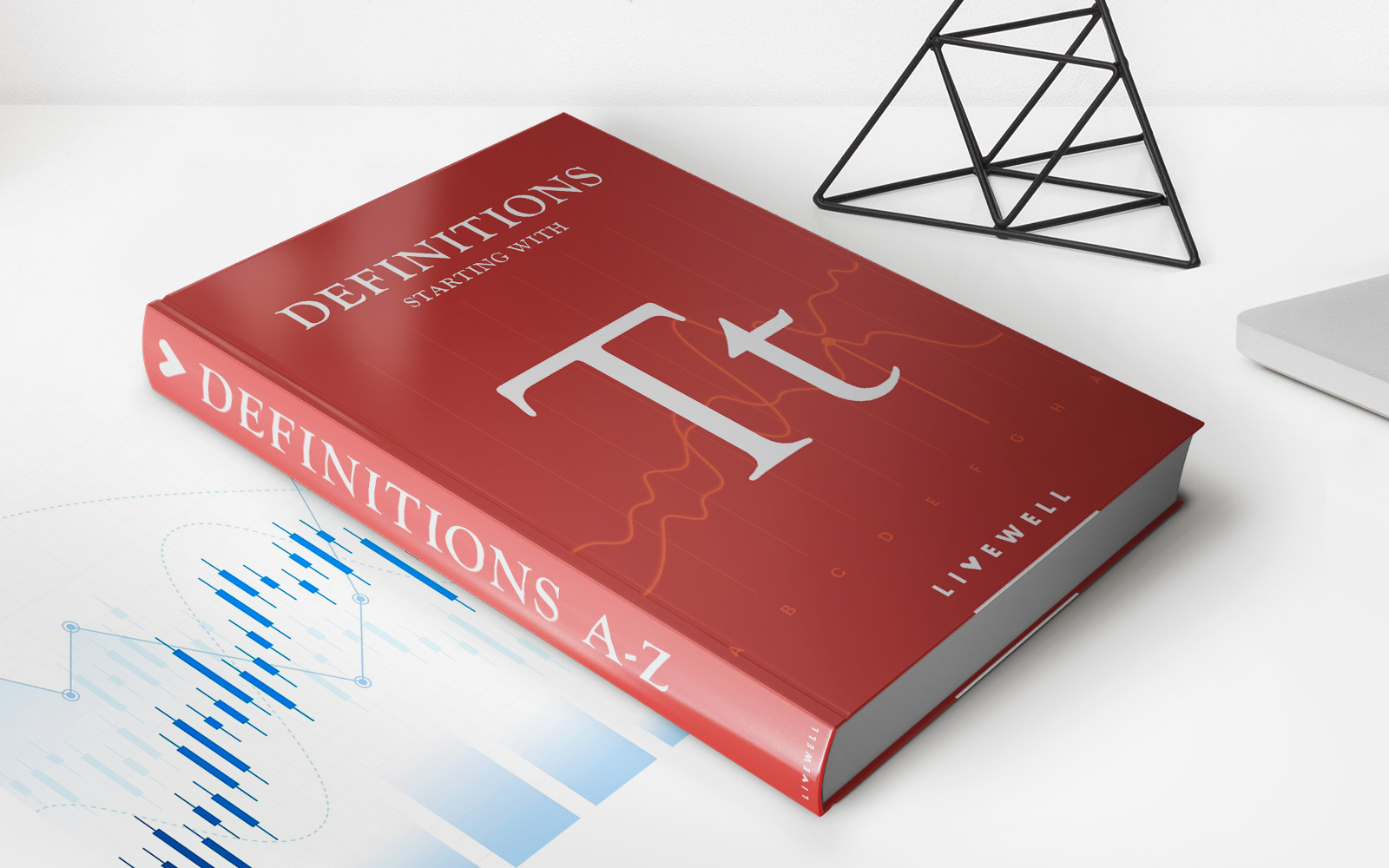Home>Finance>When Taking Out Student Loans, What Do You Call The Signed Agreement To Pay Them Back?


Finance
When Taking Out Student Loans, What Do You Call The Signed Agreement To Pay Them Back?
Published: January 20, 2024
Discover the name of the binding agreement to repay student loans, known as the promissory note. Get insights on financial obligations and responsibilities in college financing.
(Many of the links in this article redirect to a specific reviewed product. Your purchase of these products through affiliate links helps to generate commission for LiveWell, at no extra cost. Learn more)
Table of Contents
Introduction
When pursuing higher education, many students turn to student loans to help fund their studies. Taking out a loan is an important decision and involves entering into a legally binding agreement to repay the borrowed amount with interest. To formalize this agreement, a signed document is required, commonly referred to as a promissory note.
Understanding the terms and conditions outlined in the promissory note is crucial for borrowers, as it outlines their obligations and responsibilities throughout the loan repayment process. It is essential to comprehend the consequences of not fulfilling these obligations, as well as the available options for repayment.
This article aims to provide a comprehensive overview of the promissory note and its significance in the realm of student loans. It will walk you through the different types of student loans, the content typically included in a promissory note, and the consequences of defaulting on your loan. Additionally, it will explore various options for repaying student loans.
Whether you are a current student or a recent graduate, having a clear understanding of the promissory note is vital for making informed decisions about financing your education and managing your financial future.
Types of Student Loans
There are several types of student loans available to help finance higher education. Understanding the differences between them can help borrowers choose the most suitable option for their needs. The two primary types of student loans are:
- Federal Student Loans: These loans are funded by the federal government and offer numerous benefits, such as fixed interest rates, flexible repayment options, and the possibility of loan forgiveness. Federal student loans include Direct Subsidized Loans, Direct Unsubsidized Loans, and Direct PLUS Loans.
- Private Student Loans: These loans are provided by private lenders, such as banks or credit unions. Private student loans typically have variable interest rates and fewer repayment options compared to federal loans. Eligibility and terms vary depending on the lender.
It is advisable for students to exhaust all federal loan options before considering private student loans. Federal loans generally offer more favorable terms and borrower protections.
Within the realm of federal student loans, there are also specialized loan programs, such as the Perkins Loan program and the Federal Family Education Loan (FFEL) program. Each program has its own eligibility criteria and terms.
It is essential to carefully review and compare the terms and benefits of different student loans before borrowing. Understanding the differences will help borrowers make informed decisions and select the most appropriate loan type for their education financing needs.
The Agreement to Repay Student Loans
When taking out a student loan, borrowers enter into a legal agreement to repay the borrowed amount, along with any accrued interest, over a specified period of time. This agreement is formalized through a document known as the promissory note.
The promissory note serves as evidence of the borrower’s commitment to repay the loan according to the terms and conditions set forth by the lender. It outlines the rights and responsibilities of both the borrower and the lender throughout the duration of the loan.
The promissory note contains detailed information about the loan, including the loan amount, interest rate, repayment schedule, and any applicable fees. It also defines the consequences for defaulting on the loan and provides information on late payment penalties or other charges that may be incurred.
Typically, the promissory note is signed electronically or in physical copy, depending on the lender’s preference. It is important for borrowers to carefully read and understand the terms of the promissory note before signing, as it is a legally binding document.
It is also worth noting that the terms of the promissory note may vary depending on the type of loan. Federal student loans, for example, have standardized promissory notes that are used by all borrowers. Private student loans, on the other hand, may have individualized promissory notes that vary depending on the lender.
Overall, the promissory note is an essential part of the student loan process. By signing this agreement, borrowers commit to repaying their loans and acknowledge the consequences of failing to meet their repayment obligations. It is crucial for borrowers to understand the terms and conditions outlined in the promissory note to ensure a smooth and successful loan repayment experience.
Understanding the Promissory Note
The promissory note is a legally binding document that serves as the agreement between the borrower and the lender in a student loan transaction. It outlines the specific terms and conditions of the loan, including repayment terms, interest rates, and any additional fees or charges.
To ensure a clear understanding of the promissory note, borrowers should pay close attention to the following key components:
- Loan Amount: This section specifies the total amount of money borrowed.
- Interest Rate: The promissory note details the interest rate, which determines how much extra the borrower will pay over the loan’s lifetime.
- Repayment Schedule: This portion outlines the repayment terms, including the number of monthly payments, their due dates, and the overall duration of the repayment period.
- Grace Period: Some promissory notes include a grace period, allowing borrowers a period of time after graduation before they are required to begin repayment.
- Forbearance and Deferment: The promissory note may explain the options for deferring or temporarily suspending loan payments, such as during a period of financial hardship or enrollment in further education.
- Prepayment and Early Repayment: This section clarifies whether borrowers can make extra payments or pay off the loan ahead of schedule without incurring penalties.
- Default and Consequences: The promissory note will outline the repercussions of defaulting on the loan, including damage to credit scores, wage garnishment, and potential legal action.
By carefully reviewing and understanding each of these components, borrowers can ensure they are fully informed about their loan obligations and rights throughout the repayment process.
It is important to note that promissory notes can vary depending on the type of student loan. Federal student loans have standardized promissory notes, while private student loans may have individualized agreements. In any case, borrowers should take the time to read and comprehend the specific terms and conditions of their promissory note to avoid any surprises or misunderstandings later on.
Key Components of the Promissory Note
The promissory note is a legally binding document that outlines the terms and conditions of a student loan. Within this document, several key components provide important information for borrowers. Understanding these components is vital for borrowers to fulfill their obligations and navigate the loan repayment process effectively.
- Loan Details: The promissory note includes specific details about the loan, such as the loan amount, disbursement dates, and the expected date of the final payment.
- Interest Rate: This component outlines the interest rate on the loan. It is important for borrowers to understand whether the rate is fixed or variable and how it will impact the total amount repaid over time.
- Repayment Terms: The promissory note lays out the repayment terms, including the monthly payment amount and the duration of the repayment period. It also details whether the repayment is structured as equal installments or graduated payments.
- Deferment and Forbearance: This component clarifies the options for temporarily suspending or reducing loan payments, such as deferment or forbearance, in the event of financial hardship or other qualifying circumstances.
- Prepayment and Early Repayment: Some promissory notes include provisions for making extra payments or repaying the loan in full ahead of schedule. Borrowers should review these terms to understand any associated fees or penalties.
- Default and Consequences: This component outlines the consequences of defaulting on the loan, such as damage to credit scores, wage garnishment, and potential legal action. Understanding the potential ramifications is essential for borrowers to avoid default and explore alternative repayment options.
- Discharge or Forgiveness: In certain circumstances, student loans may be eligible for discharge or forgiveness, such as through specific loan forgiveness programs or in cases of permanent disability. The promissory note may outline the conditions under which such options are available.
Reading and understanding each of these key components in the promissory note will empower borrowers to make informed decisions and successfully fulfill their loan obligations. If any terms are unclear or confusing, borrowers should seek clarification from the lender or a financial advisor to ensure a complete understanding of their responsibilities and rights throughout the loan repayment process.
Obligations and Responsibilities of Borrowers
When signing a promissory note for a student loan, borrowers take on certain obligations and responsibilities. Understanding these responsibilities is crucial to maintain a good standing with the lender and successfully repay the loan. Some of the key obligations and responsibilities of borrowers include:
- Repayment: The primary obligation of borrowers is to repay the loan according to the terms outlined in the promissory note. This includes making regular and timely payments, typically on a monthly basis, until the loan is fully repaid.
- Interest Accrual: Borrowers are responsible for the interest that accrues on their loan. This means that in addition to repaying the principal amount borrowed, borrowers must also pay the interest charges over the life of the loan.
- Updating Contact Information: It is the responsibility of borrowers to keep their contact information up to date with the lender. This includes providing current mailing addresses, email addresses, and phone numbers so that important loan-related communication can be received in a timely manner.
- Notification of Changes: Borrowers must notify the lender of any changes in their circumstances that may affect their ability to repay the loan. This includes changes in employment status, financial hardship, or enrollment status if they are still in school.
- Repayment Plan Selection: Borrowers may have the responsibility of selecting a specific repayment plan that aligns with their financial situation and goals. They should familiarize themselves with the available repayment options and choose the one that best suits their needs.
- Loan Forgiveness Programs: If borrowers are eligible for loan forgiveness programs, it is their responsibility to follow the necessary steps and meet the requirements to qualify for forgiveness. This may include working in certain professions or public service for a specific period of time.
- Maintaining Good Credit: Borrowers must prioritize making loan payments on time to maintain a good credit history. Late or missed payments can negatively impact credit scores and make it challenging to obtain credit in the future.
By fulfilling these obligations and responsibilities, borrowers demonstrate their commitment to repaying their student loans and manage their financial responsibilities effectively. It is important to review the promissory note thoroughly and seek clarification from the lender if any obligations or responsibilities are unclear. Being proactive and responsible in loan repayment can help borrowers maintain a positive financial standing and successfully repay their student loans.
Consequences of Defaulting on Student Loans
Defaulting on student loans can have serious consequences that can significantly impact a borrower’s financial well-being. When a borrower fails to make payments on their student loans for an extended period of time, they are considered to be in default. The consequences of defaulting on student loans include:
- Negative Impact on Credit Score: Defaulting on student loans can significantly damage a borrower’s credit score. This makes it difficult to obtain future credit, such as loans or credit cards, and may result in higher interest rates if credit is extended.
- Collection Activities: Lenders have the right to engage in collection activities to recoup the outstanding loan balance. This can include wage garnishment, tax refund offset, and even legal action to obtain repayment.
- Additional Fees and Penalties: Defaulting on student loans may result in additional fees, late payment penalties, and collection costs being added to the balance owed. These extra charges can significantly increase the overall amount that the borrower has to repay.
- Loss of Loan Forgiveness Options: Defaulting on student loans can disqualify borrowers from certain loan forgiveness programs that they may have been eligible for otherwise. This can result in the loss of potential loan forgiveness benefits.
- Impact on Tax Refunds: Defaulted borrowers may have their tax refunds seized through a process called tax refund offset. This means that any expected tax refund can be intercepted to repay the outstanding student loan debt.
- Loss of Federal Benefits: Defaulting on federal student loans can result in the loss of certain federal benefits, such as eligibility for future federal financial aid, including grants and loans.
- Damage to Professional Outlook: Defaulting on student loans can also impact a borrower’s professional outlook. Some industries and employers may conduct credit checks during the hiring process, and having defaulted loans can negatively impact the candidate’s chances of securing employment or career advancement opportunities.
It is crucial for borrowers to take proactive steps to avoid defaulting on their student loans. If a borrower is facing financial challenges, it is advisable to contact the loan servicer or lender as soon as possible to explore options for repayment assistance, such as income-driven repayment plans or deferment. Taking control of the situation and seeking guidance can help borrowers avoid the severe consequences of defaulting on their student loans.
Options for Repaying Student Loans
Repaying student loans can seem overwhelming, but there are various options available to borrowers to help manage and successfully repay their loans. Here are some common repayment options:
- Standard Repayment Plan: This is the default repayment plan offered by lenders. It involves fixed monthly payments over a set period of time, typically 10 years for federal loans. This plan ensures loans are repaid in full within the designated timeframe.
- Income-Driven Repayment Plans: These plans adjust monthly payments based on borrowers’ income and family size. Popular income-driven repayment plans include Income-Based Repayment (IBR), Pay As You Earn (PAYE), and Revised Pay As You Earn (REPAYE). These plans can make payments more affordable, particularly for borrowers with low income or high debt.
- Graduated Repayment Plan: This plan starts with lower monthly payments that gradually increase over time. Graduated repayment plans are beneficial for borrowers who expect their income to increase steadily throughout their career.
- Extended Repayment Plan: This plan extends the repayment period beyond the standard 10-year term, resulting in lower monthly payments. However, borrowers may end up paying more in interest over the life of the loan.
- Deferment and Forbearance: Borrowers facing financial hardship may be eligible for deferment or forbearance, which allow temporary suspension or reduction of loan payments. Deferment is typically available for specific situations such as unemployment or returning to school, while forbearance is typically granted at the lender’s discretion during financial hardship.
- Loan Forgiveness Programs: Certain borrowers may be eligible for loan forgiveness programs, such as Public Service Loan Forgiveness (PSLF) or Teacher Loan Forgiveness. These programs forgive a portion or the entire loan balance after meeting specific criteria, such as working in a qualifying occupation or making a certain number of on-time payments.
- Loan Consolidation: Borrowers with multiple federal loans can combine them into a single loan through loan consolidation. This simplifies repayment by having one monthly payment and potentially extending the repayment term.
It’s important for borrowers to research and understand the options available to them, as each option has its own eligibility requirements and potential trade-offs. Borrowers should contact their loan servicer to explore the best repayment option based on their individual circumstances.
Additionally, making extra payments whenever possible or increasing monthly payments can help repay the loan faster and reduce overall interest paid. Borrowers can also consider refinancing their loans with private lenders to potentially get a lower interest rate, but this may result in the loss of federal loan benefits.
By exploring and utilizing these repayment options, borrowers can better manage their student loans and work towards achieving financial stability.
Conclusion
Student loans play an integral role in financing higher education for many aspiring students. Understanding the intricacies of these loans, as well as the responsibilities and obligations that come with them, is crucial for borrowers to navigate the repayment process successfully.
In this article, we have explored the significance of the promissory note, the legally binding agreement between the borrower and the lender. We discussed the types of student loans available, including federal loans and private loans, and emphasized the importance of exhausting federal loan options before turning to private loans.
We examined the key components of the promissory note, such as the loan amount, interest rate, repayment schedule, and consequences of default. Understanding these components empowers borrowers to make informed decisions and fulfill their loan obligations responsibly.
We also discussed the obligations and responsibilities that borrowers have, including making payments on time, keeping contact information updated, and notifying the lender of any changes in circumstances. Complying with these responsibilities helps borrowers maintain a good standing and successfully repay their loans.
Furthermore, we explored the consequences of defaulting on student loans, emphasizing the impact on credit scores, the initiation of collection activities, and potential penalties and fees. It is crucial for borrowers to proactively seek assistance and explore alternative repayment options to avoid defaulting on their loans.
Lastly, we discussed various options for repaying student loans, such as standard repayment plans, income-driven plans, deferment, or loan forgiveness programs. Understanding these options and working with loan servicers can help borrowers find the best repayment strategy that aligns with their financial situation and goals.
By staying informed, being proactive, and seeking assistance when needed, borrowers can successfully navigate the complexities of student loan repayment. Remember, managing student loans is a long-term commitment, and taking control of your debt will contribute to your financial well-being in the years to come.














